It’s been quite a while since I posted a traditional Mangalorean recipe. Today as I sifted through my draft posts I found this recipe for a lovely Mangalorean pudding which in Konkani is called as ‘MaNi’ (the pronunciation of the ‘N’ is made with a little twist in the tongue). The main ingredient of this pudding, ‘Indache peet’ as it is popularly called in the Konkani dialect spoken by Catholics is derived from the trunk of the Caryota Urens tree. Caryota Urens is the botanical name for the fishtail palm. In the olden days, everyone used to have at least one or two trees in their backyard and the flour was a must-have ingredient in every Mangalorean pantry. Some people still follow the tradition and stock it all year round to be quickly cooked into a thin gruel and drunk by anyone having an upset tummy. I have had this concoction for as long as I can remember, especially during my childhood when my mother used to make it and mix some milk, a pinch of salt and a little sugar to taste. The drink was satisfying and delicious. I will post the recipe soon.
Indhacha Peetachi Mani | Fishtail Palm Sago Pudding
Prep time: 30-45 mins | Cooking time: 45-50 mins | Yield: 8″ round pan
Ingredients:
- 1 cup indhache peet/kithul flour (caryota urens/fishtail palm sago flour)
- 2 cups coconut milk (or regular milk) * see notes
- 1 cup water
- 1 cup sugar (or powdered jaggery to taste)
- a few chopped cashew nuts (optional)
- a few halved cashew nuts, fried in ghee (optional)
Method:
1. Grease a steel thali (plate with tall edges) with ghee or oil and keep it ready. Don’t miss this step.
2. Place the palm sago flour in a vessel and add enough water until it looks all cloudy. Keep aside for 20-30 minutes till the mixture settles to the bottom (sediment) and clear water remains on top. Carefully strain off the clear water.
3. Add the coconut milk (or regular milk), water and sugar to the sediment, stir well to mix and transfer this mixture to a heavy based wok/non stick pan.
4. Now, this stage requires your undivided attention so don’t multi task. Heat the pan on a medium low and stir continuously using a whisk to prevent lumps from forming. For the first few minutes (about 7-8 mins) it may seem like a futile task to keep stirring as the mixture will be very liquidy. But slowly as it begins to heat up it will thicken, so be very careful or it will begin to stick to the base of the pan.
5. When the mixture thickens stir continuously as lumps once formed are hard to get rid of. Toss in the chopped cashew nuts at this stage and continue to cook the mixture till it begins to leave the sides of the pan (when you divide it with a spatula you will see the partition remain for a few seconds)
6. Pour the mixture into the prepared steel plate and smoothen the surface as much as possible. It is okay if it looks lumpy. Place on a wire rack or steel stand and let the mani cool completely.
7. For best results you may chill the mani before cutting into slices and serving. Enjoy!
Notes:
Freshly extracted coconut milk is preferred. However, you may use coconut milk powder too. To make 2 cups of coconut milk, dissolve 6-7 tablespoons of coconut milk powder in 1-1/2 cups of warm water. Cup measure used is 1 cup = 240ml
This is a gluten free and vegan (if you use coconut milk instead of cow’s milk) dish and has a host of health benefits.
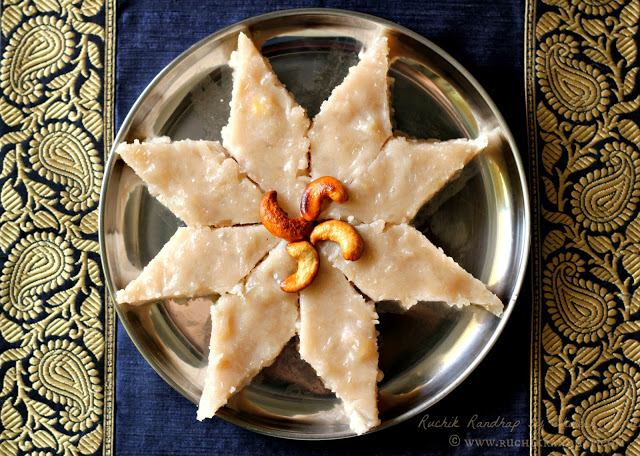
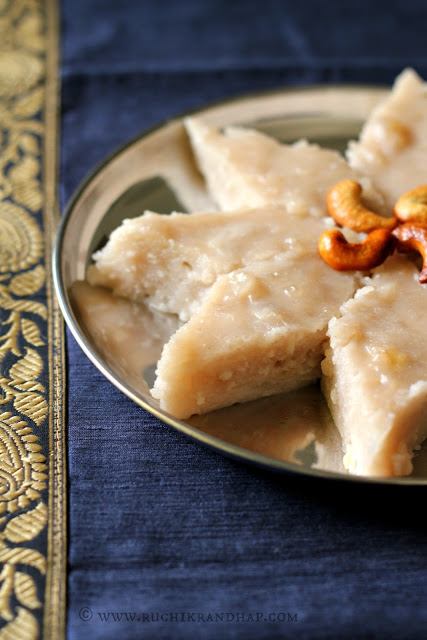
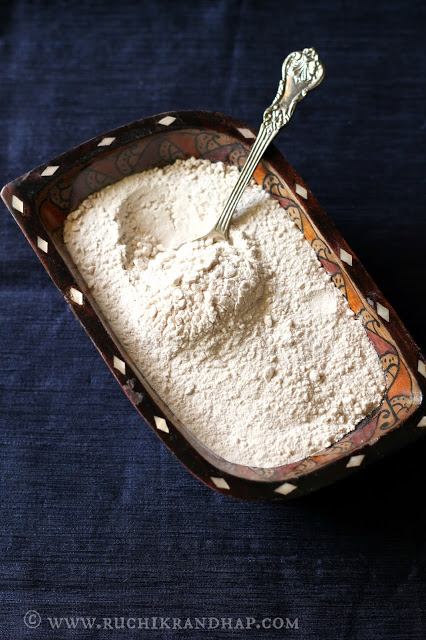
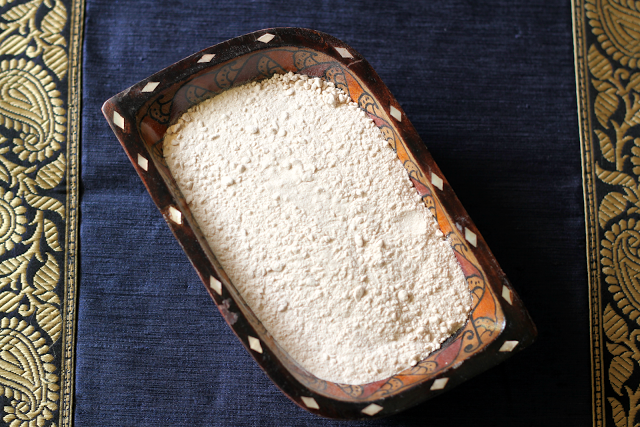
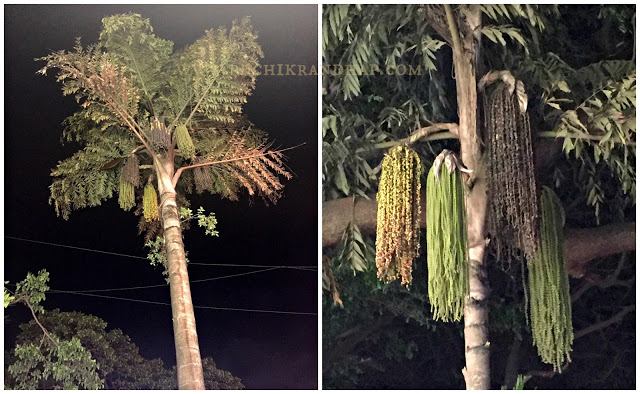
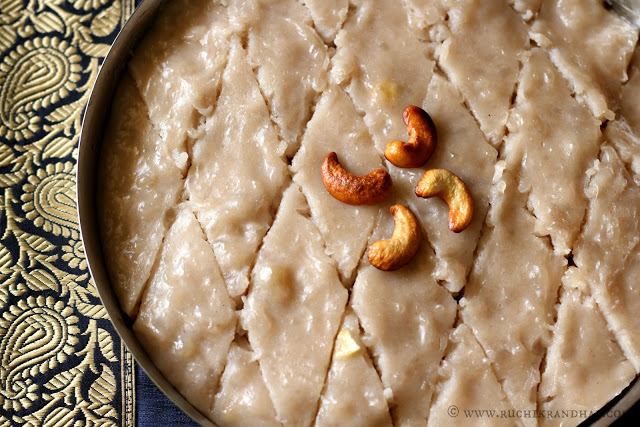
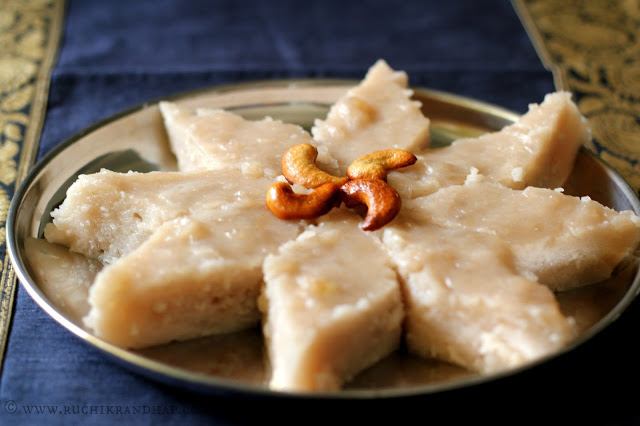
Thank you 🙂
Thank u for this recipe. I was searching and found very interesting.
Glad you like it Shivayini! Do give it a try and let me know!
Hi do you get the indhache peet in dxb ? If so where ? Thanks
Hi,
I am not sure about that, you can check in any Sri Lankan store and ask for Kitul flour 🙂
It is available in Prince sweets Karama or Al Qusais
I have no idea, you could check. I always brought my stock from India
good to see this mangalorean dish as well as healthy dish..
Thanks a lot!
Thank you for the specific words used,and elaborate discription about indache peet,
I am very happy to read your articles.
God bless in your work.
Thanks a lot for your appreciation!
I ate Mani nearly every week growing up as I had a Manglorean neighbor. Have missed it as no one else makes this anymore. So glad to find your recipe, now I have to find the peet. Will check the Sri Lankan stores in Toronto. Thanks again
Hi Cheryl,
Thanks for your lovely comment! I hope you get to make this mani and enjoy it!